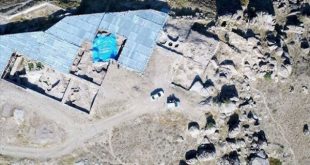 This discovery refuted the famous theory.
This discovery refuted the famous theory.
Two skulls, discovered during archaeological excavations in China, can serve as a confirmation of the theory that Neanderthals inhabited the territory.
Previously, we knew that Neanderthals lived mainly in Europe and Western Asia, but remains in East and Central Asia, was not enough to prove that ancient people lived in this area. Scientists suggest that the remains may belong to Denisovskaya period.
“The problem is the patterns of variability and the dynamics of a population of ancient humans in the later Pleistocene,” said the study’s lead author Erik Trinkaus (Erik Trinkaus) Professor Washington University in St. Louis.
The age of the finds is presumably 105-125 thousands of years. Both skulls have prominent brow bone and inner ear bones, which resemble the remains of Neanderthals. But the discovery of the skull are more delicate brow and less dense bones. According to Trinkaus, this is proof that the evolution of the bone mass decreased.
© 2017, paradox. All rights reserved.




